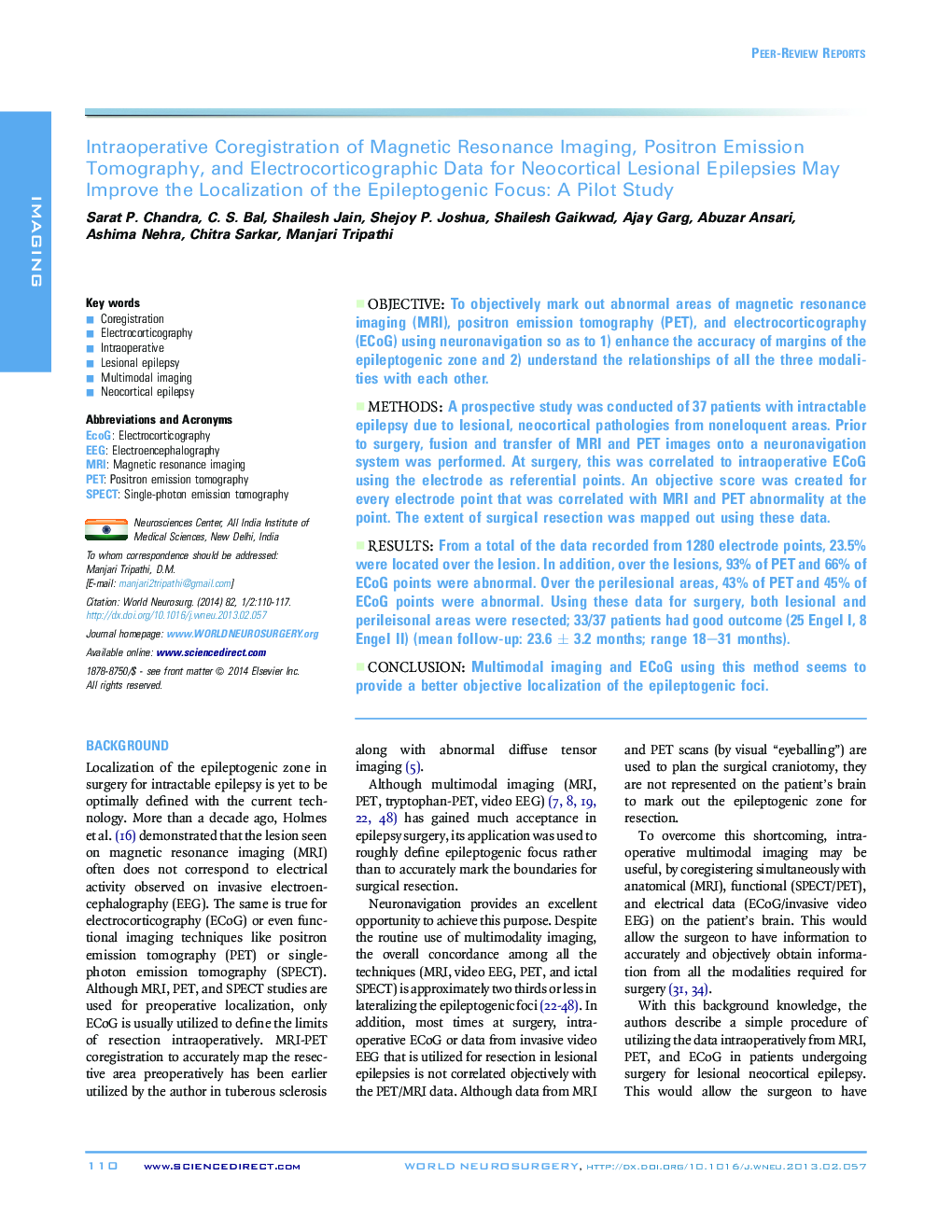| Article ID | Journal | Published Year | Pages | File Type |
|---|---|---|---|---|
| 3095537 | World Neurosurgery | 2014 | 8 Pages |
ObjectiveTo objectively mark out abnormal areas of magnetic resonance imaging (MRI), positron emission tomography (PET), and electrocorticography (ECoG) using neuronavigation so as to 1) enhance the accuracy of margins of the epileptogenic zone and 2) understand the relationships of all the three modalities with each other.MethodsA prospective study was conducted of 37 patients with intractable epilepsy due to lesional, neocortical pathologies from noneloquent areas. Prior to surgery, fusion and transfer of MRI and PET images onto a neuronavigation system was performed. At surgery, this was correlated to intraoperative ECoG using the electrode as referential points. An objective score was created for every electrode point that was correlated with MRI and PET abnormality at the point. The extent of surgical resection was mapped out using these data.ResultsFrom a total of the data recorded from 1280 electrode points, 23.5% were located over the lesion. In addition, over the lesions, 93% of PET and 66% of ECoG points were abnormal. Over the perilesional areas, 43% of PET and 45% of ECoG points were abnormal. Using these data for surgery, both lesional and perileisonal areas were resected; 33/37 patients had good outcome (25 Engel I, 8 Engel II) (mean follow-up: 23.6 ± 3.2 months; range 18–31 months).ConclusionMultimodal imaging and ECoG using this method seems to provide a better objective localization of the epileptogenic foci.
